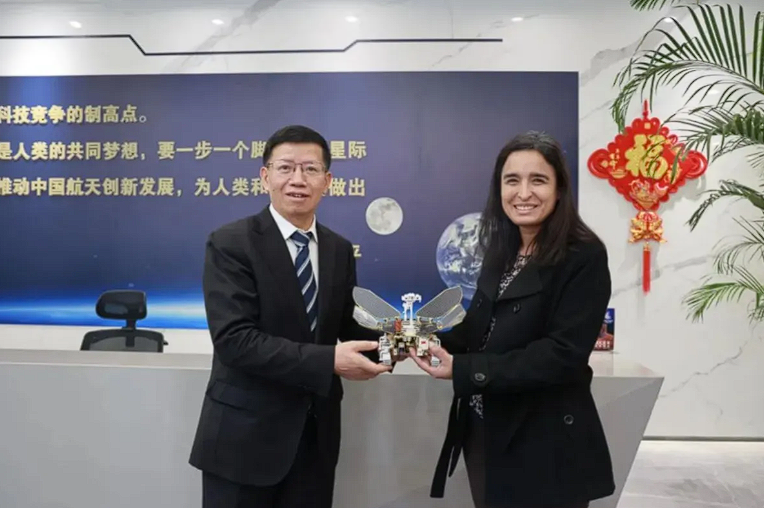China has invited Venezuela to join its International Lunar Research Station (ILRS) project alongside Russia. Venezuela would be the first country to partner with China and Russia on the project, which is set to be constructed in the early 2030s using super heavy-lift launch vehicles. The launches will follow smaller precursor missions scheduled to take place later this decade.
On March 30, Marglad Bencomo, Executive Director Bolivarian Agency for Space Activities (ABAE), visited China’s Deep Space Exploration Laboratory (DSEL) to discuss cooperation and exchanges. She met Wu Yanhua, former deputy director of the China National Space Administration (CNSA) and currently the executive vice-chairman of DSEL. According to a DSEL statement, the two sides exchanged views on international cooperation in deep space exploration.
Bencomo expressed Venezuela’s willingness to sign a China-Venezuela Memorandum of Understanding (MoU) immediately and jointly promote the construction of the International Lunar Research Station. ABAE will likely sign an MoU on April 24, as DSEL has invited it to attend an international forum on China’s National Space Day.
In 2021, in a meeting in St. Petersburg, Russia and China presented a roadmap for the joint ILRS and opened the project to interested international partners. Through ILRS, China seeks to build partnerships equivalent to the US-led Artemis Program. As the diplomatic foundation of the Artemis Accords, 23 countries have signed up for the US-led cislunar initiative.
Venezuela and China are not new space partners. China has constructed and launched Venezuela’s handful of satellites in the past few years. However, the partnership is one-sided, tilting towards the more space-capable China. The signing of the China-Venezuela MoU could indicate the growing astropolitical bipolarity of cislunar and lunar governance. Countries either are in the US-led bloc or the China-led bloc.
DSEL published a statement on April 6 this year detailing a visit by the Brazilian Space Agency (AEB) president, Carlos Moura, where both agencies discussed ILRS cooperation. China is interested in getting Brazil on board ILRS, both being BRICS partners, irrespective of the fact that Brazil has signed the Artemis Accords.
China is developing super heavy-lift launch vehicles capable of launching major lunar infrastructure missions and transporting taikonauts for lunar operations. It’s under-development and untested launch vehicle, the Long March 10, will likely be launched in 2027. Long March 10 could send taikonauts by the end of 2020s. China wants to make the most of its global techno-economic advantage to establish a China-led international lunar infrastructure.





